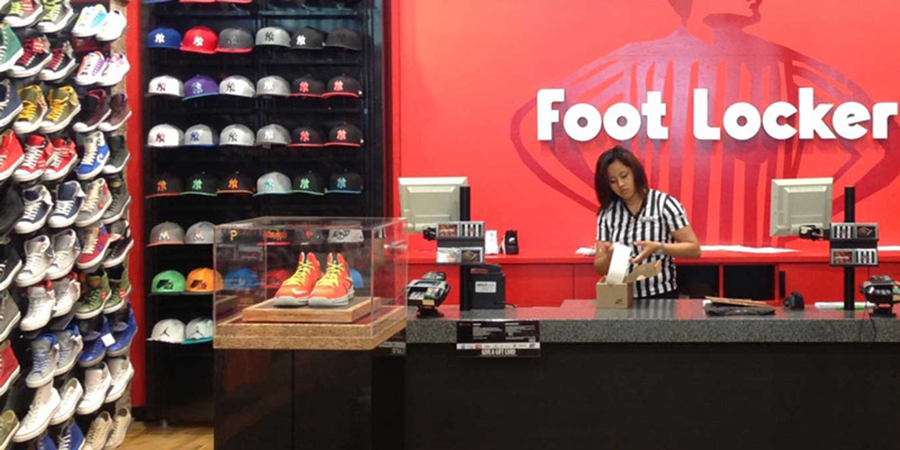Foot Locker Inc. reported that second-quarter comparable-store sales decreased 6 percent. Total sales decreased 4.4 percent to $1.7 billion in the quarter ended July 29, 2017, compared with sales of $1.78 billion in the corresponding prior-year period. Excluding the effect of foreign currency fluctuations, total sales for the second quarter decreased 4.3 percent.
The company’s gross margin rate decreased to 29.6 percent of sales from 33 percent a year ago, and selling, general and administrative expense rate increased 20 basis points to 19.9 percent of sales.
Net income was $51 million, or 39 cents per share, in Q2 compared with net income of $127 million, or 94 cents per share, in the comp period of 2016. This result included a $50 million pre-tax litigation charge related to a recent appeals court decision in a lawsuit against the company involving the conversion of its pension plan in 1996. Foot Locker previously recorded a $100 million pre-tax charge in the third quarter of 2015 related to the same litigation. Excluding this charge, which reduced after-tax earnings by 23 cents per share, non-GAAP earnings were 62 cents per share.
“While we believe our position in the market for premium sneakers remains very strong and our customers continue to look to us for compelling new athletic footwear and apparel styles,” said Richard Johnson, chairman and chief executive officer, “sales of some recent top styles fell well short of our expectations and impacted this quarter’s results. At the same time, we were affected by the limited availability of innovative new products in the market. We believe these industry dynamics will persist through 2017, and we expect comparable sales to be down 3 to 4 percent over the remainder of the year.”
Johnson continued, “We are obviously disappointed in the results for the quarter, and our team is working quickly to adjust our operations to a changed retail landscape in which we are seeing our consumers move faster than ever from one source of inspiration or influence to another. In addition to working with our vendor partners to identify and capture new trends faster, we are also evaluating a realignment of our capital expenditure priorities and additional expense reductions so we can regain our momentum on both the top and bottom lines and deliver long-term value for our shareholders.”
At July 29, 2017, the company’s merchandise inventories were $1.29 billion, 3.7 percent lower than at the end of the second quarter last year. Using constant currencies, inventory decreased 4.9 percent. The company’s cash totaled $1.04 billion at quarter end, while the debt on its balance sheet was $126 million. FL spent $21 million to repurchase 350,000 shares during the quarter and paid a quarterly dividend of 31 cents per share for $41 million.
“In addition to retaining our very strong overall financial position, we took aggressive action in the second quarter to ensure that our inventory levels remained in line with sales,” said Lauren Peters, EVP and CFO. “In light of the current sales challenges in this unprecedented retail environment, we are considering a range of expense alternatives, including adjustments to our largely productive store base; reductions in overall capital spending, as well as shifting of emphasis from real estate to digital and supply chain; and various additional expense initiatives to create a more flexible, efficient organization.”
During the second quarter, Foot Locker Inc. opened 24 new stores, remodeled or relocated 38 stores, and closed 19 stores. As of July 29, 2017, FL operated 3,359 stores in 23 countries in North America, Europe, Australia and New Zealand. In addition, 68 franchised Foot Locker stores were operating in the Middle East, as well as 14 franchised Runners Point stores in Germany.
Photo courtesy Foot Locker












